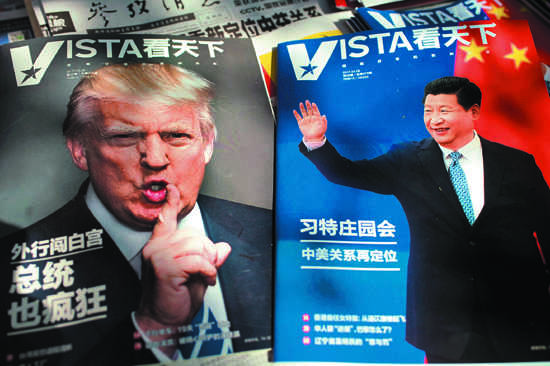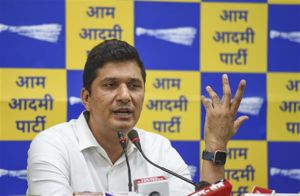
Big picture: PM Modi must realise the real challenge is without, not within.
KC Singh
THIS week focus returns to Asia as two major summits — Asia Pacific Economic Cooperation (APEC) and East Asia Summit (EAS) — are held in Vietnam and the Philippines, respectively. India is not a member of the first, though desirous of joining it. PM Narendra Modi shall interrupt relentless campaigning in Gujarat to attend the latter on November 12. US President Donald Trump, combining bilateral visits to Japan, the Republic of Korea (ROK), China, Vietnam and the Philippines with attending both summits, heightens interest, particularly as earlier he was skipping the EAS. Chinese President Xi Jinping, newly endorsed for a second five-year term by the 19th Party Congress, attending the APEC Summit completes the Asian drama.
The US State Department announced that Trump’s focus would be on neutralising nuclear threat from the Democratic Republic of Korea (DPRK), promoting a free and open Indo-Pacific (euphemism for contesting Chinese corralling of two- thirds of South China Sea, via artificial island building) and reciprocal trade, i.e., balancing the huge US trade imbalances with China, Japan and ROK. Trump is also expected to reassure allies and partners concerned over perceived US retreat from the region. Essentially, the summits this year are a power play between the US and China and a contest between two alternative visions of growth and governance. The Western liberal, democratic and free trade model is posited against the Chinese model, fine-tuned by President Xi, of economic success through centralised and authoritarian management underpinned by nationalism minus civil liberties and elective government.
The 19th Chinese Party Congress has allowed Xi to consolidate power and perhaps become the most powerful leader since Mao Zedong, with allies and followers controlling important institutions. Significantly, no clear successor is visible, thus breaching injunction by Deng Xiaoping, father of the Chinese economic miracle that his successors would only hold two five-year terms. Among the seven-member standing committee of the politburo, the de facto Chinese cabinet, is Wang Huning — professor, ideologue and adviser to all post-Deng presidents. He devised the “Three Represents” of President Jiang Zemin, recommending party reachout to private business and professionals and is now behind “Xi Jinping Thought” embedded in the constitution. He has, over decades, provided intellectual ballast to Chinese rulers’ view that social and economic change can only be accomplished by centralised and authoritarian rule, while freezing political evolution. The Tiananmen Square uprising by students in 1989 was taken by them as confirming its validity. Xi has added an anti-graft edge, thus enhancing his own “legitimacy”, which in Chinese tradition is called the “Mandate of Heaven”. Ensuing public support has enabled him to purge potential rivals or dissenters.
At the 19th Congress, President Xi reiterated his “China Dream” to make the nation a “basically modernised nation” by 2035 and a “rich and powerful socialist nation” by 2050. The 21st century continental and maritime Silk Route, called the Belt and Road Initiative (BRI), is the next step to achieve this. It is imagined as a Sino-centric network for trade and investments to rival, if not supplant, existing post-World War II architecture created by the West under US leadership.
The Xi-Trump summit thus assumes importance. China seeking “great power relationship” is nothing but a desire for the US to accept them as the only “other” in a bipolar engagement. Trump has frequently praised Xi in the past, even calling him “King of China”, perhaps in line with his penchant for authoritarian rulers, assuming he can flatter them for a shortcut to strategic compromise. Trump would seek China to compel DPRK to accept nuclear restraint, if not disarmament; balance bilateral trade; and end Chinese predatory trading practices and poaching of intellectual property. Xi will tactically yield some ground but is unlikely to kow-tow fully.
Asian neighbours of China, concerned over Trump’s erratic and vacillating policy making, must devise alternative strategies, assuming Trump will, at best, henceforth, be an off-shore balancer. In a Pew Research Centre poll, only 24 per cent Japanese trust Trump compared to 78 per cent giving thumbs up to former President Barack Obama. PM Shinzo Abe is hewing a path by not allowing the Trans-Pacific Partnership (TPP) to collapse, inviting 11 members, minus the US which quit, to a meeting before Trump’s visit. He has also resurrected and elevated to political level the 2007 meeting of Australia, India, Japan and the US, dubbed the Quad — a gathering of major regional democracies, expandable to include others later. As a swing power, India must use these emerging China-containing mechanisms as, indeed, alternative groupings, where China and India share space, for instance BRICS, etc.
Meanwhile, authoritarianism is spreading globally like a pandemic. Polls in India indicate a vast majority preferring a “strong” ruler. The play book is almost identical, despite differences in political and historical contexts. Crown Prince Mohammad bin Salman in Saudi Arabia or President Xi in China or PM Modi in India use anti-corruption crusades to purge rivals, isolate opponents and bolster public image. Trump himself operates beyond the confines of own party and the Congress, sustained by social media. Nationalism becomes the handmaiden to suppress dissent and demoralise, or even silence media. Differences of power use or abuse are obliterated between authoritarian rulers straddling different political systems.
An Atlantic Council study predicts Indo-Pacific as globally the most economically dynamic region by 2050. With a fundamental power shift underway, the study concludes a “Trans-Pacific century” has already begun. China’s BRI, advances in Artificial Intelligence, Asian Infrastructure and Investment Bank, renewal energy advances and rededication to futuristic industries is its path to growth and rapid power accrual. The BJP-led Modi government, meanwhile, expends energy on eliminating opposition and constant electioneering, implementing ambitious, but poorly conceived schemes like demonetisation and now GST, corralling media, exulting in selective positive economic news and soaring stock market.
The bubble may be more than in share prices and reality has been known to prick it inopportunely. PM Modi has a narrowing window to close ranks domestically and realise his challenge is without, not within. Unless he self-corrects soon, like Rajiv Gandhi in 1984 when China under Deng Xiaoping had only a four-year head-start over India, his would be a wasted mandate.
The writer is a former Secretary, Ministry of External Affairs



























